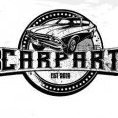-
Welcome to Auto Parts Forum
Whether you are a veteran automotive parts guru or just someone looking for some quick auto parts advice, register today and start a new topic in our forum. Registration is free and you can even sign up with social network platforms such as Facebook, X, and LinkedIn.
JC Washbish: ‘Selling Better’ Has Been the Goal All Along
-
Similar Topics
-
By CarPartAU
Are you looking for some stores to buy used or new car parts? If so, then Car Part is the place for you. Rather than sharing a limited list of stores, we at Car Part have come with the list of the best link hidden, please login to view. These sites will connect you with a large number of car part sellers across Australia. Without wasting much time, fill out the form and click send a request button. To know more, visit us today.
-
By Swizz Auto
Swizz Auto is a trusted auto parts provider in the US. We provide you with quality-tested inventories to get you the right fitment for the car’s make and model. Also, when you reach our portal, you can find link hidden, please login to view near me using the online locator tool. If you see challenges in finding the relevant information, you only need to provide us with the make and model no. Discuss them with our reps if you are concerned about warranty and shipping.
-
By TieRod
Hello everyone, new here. I am curious if anyone has sold parts on eBay or Amazon as a business. I don't just mean selling a few brake pads that you never used or something like that...lol. I mean a real functioning business where you are buying from a wholesaler or direct and then setting up your product online for sale. With that comes replenishment, margins, tax, etc. So I'm curious to know if this is working for anyone and how you got started, what software you are using, best practices, etc.
Thanks,
"Tie" Rod
-
By Dorman Products
Mechanic trivia: Do you know which vehicle has the longer wiper blade on the passenger side?
-
By Dorman Products
Before selling a vehicle, make sure to remove personal data from the infotainment system
-




Recommended Posts
Join the conversation
You can post now and register later. If you have an account, sign in now to post with your account.
Note: Your post will require moderator approval before it will be visible.